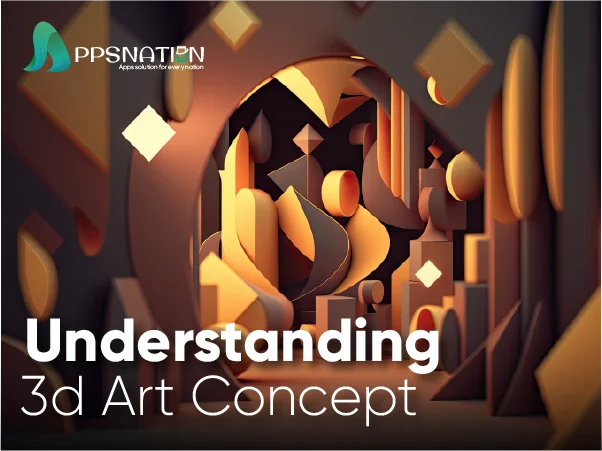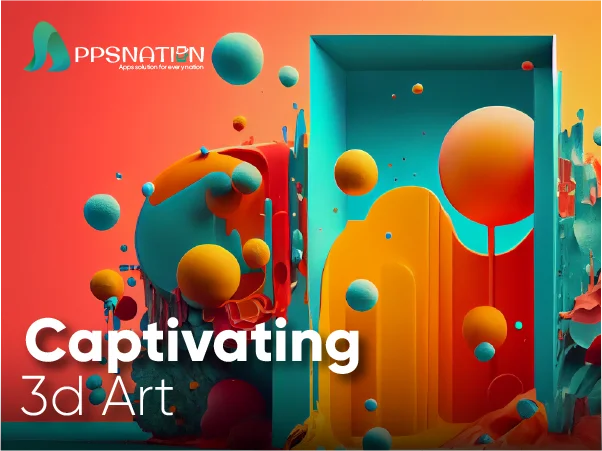In the realm of art, there exists a dynamic and captivating medium that goes beyond the traditional boundaries of two-dimensional creations. This medium is known as 3D art, which has gained immense popularity in recent years. In this article, we will explore the world of 3D art, its various dimensions, and the impact it has on both artists and viewers.
Table of Contents
| 1 | Introduction |
| 2 | What is 3D Art? |
| 3 | The Dimensions of 3D Art
|
| 4 | Tools and Techniques in 3D Art |
| 5 | The Impact of 3D Art |
| 6 | Conclusion |
| 7 | FAQs |
Introduction
In the realm of artistic expression, 3D art stands as a captivating medium that pushes the boundaries of traditional art forms. By leveraging technology and creative imagination, artists are able to bring their visions to life with depth, realism, and interactivity.
What is 3D Art?
At its core, 3D art refers to the creation of three-dimensional objects or environments that appear realistic and tangible. Unlike traditional art forms, which are typically confined to a flat canvas, 3D art introduces an extra dimension, allowing viewers to explore and engage with the artwork from various angles.
The Dimensions of 3D Art
Depth and Perspective
One of the defining features of 3D art is the creation of depth and perspective. Artists use techniques such as vanishing points, foreshortening, and depth of field to give the illusion of distance and space within the artwork. This added dimension allows viewers to feel immersed in the scene, as if they could step right into it.
Texture and Surface
In 3D art, texture and surface play a crucial role in creating realistic and visually appealing objects. Artists meticulously craft the textures of their creations, simulating materials such as metal, fabric, wood, or skin. The use of textures adds depth and tactile qualities to the artwork, making it more convincing and engaging.
Lighting and Shadows
Lighting and shadows are essential elements in 3D art that contribute to the overall atmosphere and realism of the artwork. Artists strategically place virtual light sources and manipulate shadows to create depth, drama, and emphasis. Properly executed lighting techniques can bring out the intricate details, highlight focal points, and evoke specific moods within the artwork.
Movement and Animation
Unlike static two-dimensional art, 3D art has the potential for movement and animation. Artists can breathe life into their creations by animating characters, objects, or entire scenes. This dynamic aspect of 3D art opens up new possibilities for storytelling and interactive experiences, enhancing the viewer’s engagement and immersion.
Tools and Techniques in 3D Art
The creation of 3D art relies on specialised software and tools that enable artists to model, sculpt, texture, light, and animate their creations. Popular software packages include Autodesk Maya, Blender, Cinema 4D, and ZBrush. These tools provide artists with a wide range of features and capabilities to unleash their creativity and bring their visions to fruition.
The Impact of 3D Art
Captivating 3D art has a profound impact on both artists and viewers. For artists, it offers a boundless playground for their creativity, allowing them to push artistic boundaries and explore new frontiers. It also opens up career opportunities in industries such as film, video games, advertising, architecture, and product design.
For viewers, 3D art provides a visually immersive experience that engages their senses and sparks their imagination. Whether it’s through breathtaking visual effects in movies, realistic virtual environments in video games, or interactive augmented reality experiences, 3D art has the power to transport viewers to new worlds and evoke emotions.
Conclusion
In conclusion, 3D art is a multidimensional medium that adds depth, texture, lighting, and movement to the world of artistic expression. Through the use of advanced tools and techniques, artists can create captivating and realistic artwork that engages viewers on a whole new level. With its ever-expanding possibilities and impact, 3D art continues to shape the future of visual storytelling and artistic innovation.
FAQ
Q: Is 3D art limited to digital creations?
While digital creations are prevalent in 3D art, the medium is not limited to digital platforms. Artists can also create physical sculptures and installations using techniques such as 3D printing and traditional sculpting methods.
Q. Can anyone learn 3D art?
Yes, anyone with a passion for art and a willingness to learn can delve into the world of 3D art. With the availability of online tutorials, courses, and communities, aspiring artists can develop their skills and embark on their own creative 3D art journey.
Q: How long does it take to create a 3D art piece?
The time required to create a 3D art piece can vary greatly depending on its complexity, level of detail, and the artist’s proficiency. Some pieces may take days or weeks, while more intricate and larger-scale projects can take months or even years to complete.
Q: Can 3D art be experienced in virtual reality?
Yes, 3D art is well-suited for virtual reality (VR) experiences. By leveraging VR technology, viewers can fully immerse themselves in the virtual world of 3D art, exploring and interacting with the creations in a more engaging and interactive manner.
Q: Where can I see examples of captivating 3D art?
You can find examples of captivating 3D art in various places, including art galleries, museums, online art platforms, and specialised 3D art websites. Additionally, movies, video games, and advertising campaigns often showcase impressive 3D artistry.



